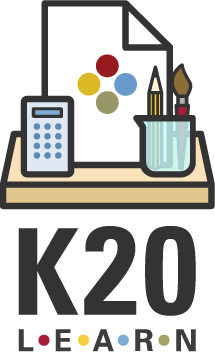Summary
Many teenagers and young adults are concerned about life in the “real world” and the adult skills needed to navigate this landscape. In this lesson, students will explore “adulting.” Students will research necessary life skills and create a presentation to be delivered to their classmates. In the process, students will learn about real-world skills adults should have in their life toolbox.
Essential Question(s)
What are the essential skills needed for independent living/life as an adult?
Snapshot
Engage
Using the Collaborative Word Clouds strategy, students will use Mentimeter to brainstorm life skills they need but may not have.
Explore
Students examine up to three (3) life skills using Wakelet, then refine their research focus to one skill.
Explain
Students observe an exemplar presentation of a life skill and research the skill they isolated for a life-skill presentation. Students share their research with a partner using the 30-Second Expert strategy, and then reflect using the Triangle-Square-Circle strategy.
Extend
Students create a life-skill presentation Elevator Speech of the skill they isolated.
Evaluate
Students teach the skill they learned about to their classmates then consider their experience in this lesson using the Two Stars and a Wish instructional strategy.
Materials
Laptops or Chromebooks with internet access
Lesson Slides (attached)
Life Skills Note Catcher (attached; 1 per student)
One-Pager Template (attached; 1 per student)
Stress Management handout (attached; 1 per student)
Presentation Rubric (attached; 1 per student)
QR Code Guide (attached; 1 per student)
Presentations Note Catcher (attached; 1 per student)
Engage
10 Minute(s)
Use the attached Lesson Slides to facilitate the lesson. Display the essential question on slide 2 and the learning objectives on slide 3.
Display slide 4 and ask students to use the QR code or Menti code to access the Mentimeter you created. Using the Mentimeter tech tool, students make a word cloud of what they think are essential life skills for being a successful adult. Give students several minutes to come up with ideas. Each student should contribute, so that the number of skills in the word cloud equals the number of students in your class.
Once students have generated a good list of suggested skills, engage in a class discussion about the skills. After the discussion, ask students if they have thought of any more skills they think are needed to be a successful adult and allow them 1–2 minutes to add these to the word cloud.
Explore
15 Minute(s)
Ask students to choose three (3) life skills they do not know how to do from the list of skills generated in the word cloud.
Hand out copies of the attached Life Skills Note Catcher. Briefly show slide 5 to allow students to pull up the Wakelet, then display the Wakelet on the screen and model how to search for life skills in the document. Ask students to use the Wakelet provided to find explanatory texts or videos that teach them about each skill. As they research, students should be recording their findings on the Life Skills Note Catcher.
At the end of the research time, revisit the essential question and ask students to think about which of the skills they researched is the most essential to successful adulthood. Engage in a classroom discussion.
After the discussion, have students choose one skill they wish to learn more about. Each student should have a unique skill to research and create a presentation on.
Explain
25 Minute(s)
Exemplary work on this lesson requires students to use a multimodal approach. Model this for students during the exemplar presentation, explaining that presenting the information using the slideshow only is not “teaching” the skill and that the project necessitates a multimodal approach.
Either pass out printed copieds of the One-Pager Template and the Stress Management handout or allow students time to access them from slide 6. Then, using slides 7–9, begin the exemplar presentation on the life skill of Stress Management.
Begin by defining stress, its effects, and the importance of stress management. Explain to students that the video Adult 101: Stress Management for Teens and Young Adults is part of your multimodal presentation, then play it from the 2:48 mark to the 3:45 mark.
Discuss the list of stress management techniques from the Stress Management handout, paying particular attention to the following:
The four A’s: Avoid, Alter, Adapt, Accept (provide an example for each)
5-5-5 breathing (teach this technique to the class)
Chair yoga
(demonstrate a couple of poses)
On slide 9, go through the “What’s the worst that can happen?” exercise. Ask the students to think of a situation that is stressing them out and literally imagine what the worst outcome might be. Ask students, “What would you do to prepare for that situation?”
Briefly explain the provided links on the Stress Management handout and how they improved the research process.
Display slide 10 and Invite students to research the skill they isolated in the “Explore” section. Students should research their topic until they are able to explain and teach it to their peers.
Have students work with a partner to participate in 30-Second Expert, with each providing a 30-second explanation of what they have learned about their skill so far.
Then, display slide 11 and have students reflect using the Triangle-Square-Circle instructional strategy.
Extend
30 Minute(s)
Display slide 12 and pass out the Presentation Rubric and the QR Code Guide.
Read through the rubric with the students and give time for questions.
Discuss making a QR code, and define multimodality.
Display slide 13 and instruct students to prepare a 30-second Elevator Speech in which they are the expert and teach their classmates the skill they learned.
Presentations should include the attached One-Pager Template handout. Allow students time to work on their presentations. Walk around the classroom to monitor and adjust progress, respond to student questions, and address misconceptions.
Evaluate
20 Minute(s)
Students present and teach the skill they learned to the class. The goal here is that students not only learn the skill they researched, but they also learn the skills that their classmates researched. Give students adequate time to present their skills.
Depending on available time, students may either traditionally present or you could set up a Gallery Walk. Use slide 14 for a gallery walk and use slide 15 for a traditional presentation.
Regardless of presentation method, classmates will demonstrate their engagement with the Presentations Note Catcher by writing three key takeaways from each presentation.
Finally, after everyone has had an opportunity to present, display slide 16. Ask students to complete an exit ticket using the Two Stars and a Wish instructional strategy.
Resources
Allstate. (2024, September ). What to do after a car accident: A step-by-step guide. https://www.allstate.com/resources/car-insurance/in-case-of-a-car-accident
Benson, A., and McGurran, B. (2024, August 20). How to start investing in 2024: A 5-step guide for beginners. NerdWallet. https://www.nerdwallet.com/article/investing/how-to-start-investing
Big Red Education. (2022, July 23). Mastering the art of negotiation for teens! https://bigrededucation.com/mastering-the-art-of-negotiation-for-teens/
Cain Law. (n.d.). What you should & shouldn't do after an Oklahoma car accident. https://cainlaw-okc.com/car-accident-lawyers/dos-donts-after-accident/
CBC Bank. (n.d.). 4 Things to know before opening a bank account. https://www.cbcbank.com/opening-bank-account-guide
Chase. (n.d.). Banking basics. https://www.chase.com/personal/banking/education/basics
Cookist. (n.d.). 12 cooking skills every young adult should learn. https://www.cookist.com/12-cooking-skills-every-young-adult-should-learn/
Dunn, J. (2018, May 15). How I learned to throw amazing parties, every time. https://www.realsimple.com/work-life/art-of-gathering-party-hosting-tips
Earl, M. (2022, August 17). How to be impressive: The young adult's guide to standing out in interviews. https://medium.com/the-playbook-by-praxis/how-to-be-impressive-the-young-adults-guide-to-standing-out-in-job-interviews-9f41605aaaa6
Finley-Moise, T. (2024, September 6). Maintenance of PC: 20 essential tips for peak performance and longevity. https://www.hp.com/us-en/shop/tech-takes/pc-maintenance-and-repair-tips
Hicks, C., and Zahriyeh, E. (2024). A beginner's guide to investing in the stock market. Fortune. https://fortune.com/recommends/investing/how-to-start-investing/
K20 Center. (n.d.). 30-second expert. Strategies. https://learn.k20center.ou.edu/strategy/1048
K20 Center. (n.d.). Collaborative word clouds. Strategies. https://learn.k20center.ou.edu/strategy/103
K20 Center. (n.d.). Elevator speech. Strategies. https://learn.k20center.ou.edu/strategy/57
K20 Center. (n.d.). Gallery walk / carousel. Strategies. https://learn.k20center.ou.edu/strategy/118
K20 Center. (n.d.). Triangle-square-circle. Strategies. https://learn.k20center.ou.edu/strategy/65
K20 Center. (n.d.) Two stars and a wish. Strategies. https://learn.k20center.ou.edu/strategy/83
LACountyLibrary. (2022, March 30). Adult 101: Stress management for teens and young adults [Video]. YouTube. https://www.youtube.com/watch?v=YqyntpZ7BFU
Lake, R. (2024, March 8). Car insurance for teens guide. Investopedia. https://www.investopedia.com/car-insurance-for-teens-guide-5089172
Legal Aid Services of Oklahoma. (n.d.) Tribal law. https://oklaw.org/issues/tribal-law
Library of Congress. (n.d.). Guide to law online: U.S. Oklahoma. Research Guides. https://guides.loc.gov/law-us-oklahoma/introduction
Microsoft Support. (n.d.). 10 Tips to help improve your wireless network. https://support.microsoft.com/en-us/topic/10-tips-to-help-improve-your-wireless-network-d28bf4e4-cf8c-e66f-efab-4b098459f298
National Association for the Advancement of Colored People. (n.d.). Understanding federal courts. https://naacp.org/find-resources/know-your-rights/understanding-federal-courts
National Center for Missing and Exploited Children. (n.d.) Internet safety and use. https://www.missingkids.org/netsmartz/topics
Naylon, J. & Payne, A. (2024, December 5). The easiest way to clean your room from top to bottom. https://www.wikihow.com/Clean-Your-Room
Nemours KidsHealth. (2018, July). Teens health: Health insurance basics. https://kidshealth.org/en/teens/insurance.html
Nemours KidsHealth. (n.d.). Teens health: Your body. https://kidshealth.org/en/teens/your-body/
Nemours KidsHealth. (n.d.). Teens health: Your mind. https://kidshealth.org/en/teens/your-mind/
Oklahoma Bar Association. (n.d.). The young adult guide. https://www.okbar.org/a2j/yag/
Oklahoma Tax Commision. (n.d.). Individuals. https://oklahoma.gov/tax/individuals.html
On Demand Court Records. (n.d.). On demand court records. https://odcr.com/
Powerful Youth. (n.d.) A beginner's guide to goal setting for teens. https://powerfulyouth.com/beginners-guide-goal-setting-for-teens-smart-goals/
Rawhide Youth Services. (2016, June 23). 9 teen job etiquette tips. https://www.rawhide.org/blog/teen-issues/teen-job-etiquette/
Robinson, D. (2024, August 21). What is gap insurance? https://www.marketwatch.com/guides/insurance-services/gap-insurance/
Sima, I. (2023, July 31). Quick guide on how to maintain your smartphone. https://www.textmagic.com/blog/how-to-maintain-your-smartphone/
Sowers, S. (n.d.). The car maintenance schedule you should follow. https://www.cargurus.com/Cars/articles/the-car-maintenance-schedule-you-should-follow
Stanley, J. (2024, October 5). 98 home repairs you don't need to call a pro for. https://www.familyhandyman.com/list/home-repairs-you-can-do-yourself/
TGS Financial. (2024). The essentials of personal record retention: A practical guide. https://tgsfinancial.com/the-essentials-of-personal-record-retention-a-practical-guide/
The Law Office of Elliott Kanter. (n.d.). Infographic - Charged with a crime? Know your rights! https://www.enkanter.com/article/infographic-charged-crime-know-your-rights
The Real Bobby McFerrin. (2023, September 21). Don’t Worry Be Happy [Video]. YouTube. https://www.youtube.com/watch?v=JKZ92za6Dbo
Tide. (n.d.). How to do laundry. https://tide.com/en-us/how-to-wash-clothes/how-to-do-laundry
TMOAP. (n.d.). Budget tracking tool. https://docs.google.com/spreadsheets/d/1LqD8cf5KewxXZiE_KIjLZDV2GydwSbQXd54F1y7MFoc/edit?gid=727220122#gid=727220122
United States Courts. (n.d). About federal courts: Court role and structure. https://www.uscourts.gov/about-federal-courts/court-role-and-structure
U.S. Department of Agriculture. (n.d.). Healthy eating for young adults. https://www.myplate.gov/tip-sheet/healthy-eating-young-adults
USAGOV. (n.d.). Credit reports and scores. https://www.usa.gov/credit
USAGOV. (n.d.). Taxes. https://www.usa.gov/taxes
Vallejo, M. (2023, November 1). A guide to conflict resolution for teens. https://mentalhealthcenterkids.com/blogs/articles/conflict-resolution-for-teens
VINE. (n.d.). VINELink. https://www.vinelink.com/#what-is-vine
Western Financial Group. (2024). 10 basic car maintenance skills everyone should have. https://westernfinancialgroup.ca/10-basic-car-maintenance-skills-everyone-should-have
Weston, K. (2022, November). A high schooler's guide to budgeting. U.S. Career Institute. https://www.uscareerinstitute.edu/blog/high-schoolers-guide-to-budgeting
WorldTrips. (n.d.) Travel tips for beginners. https://www.worldtrips.com/resources/travel-tips-for-beginners


